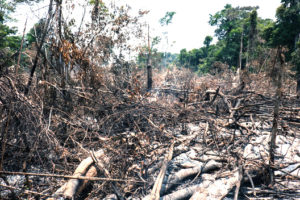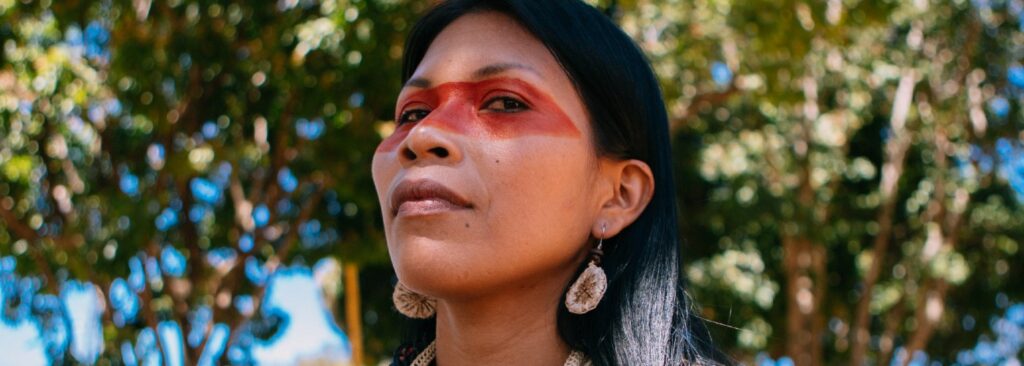Why saving the Amazon is about defending indigenous rights
“I came to the UN to ask for help so my people will be protected,” said Adriano Karipuna, leader of the Karipuna Indigenous People in Brazil, during his plea at the United Nations about the serious deforestation his community is facing.
The Karipuna have never had the chance to speak about their dramatic situation outside of Brazil. That changed when Adriano addressed the UN Permanent Forum on Indigenous People, thanks to our All Eyes on the Amazon program. Set up by Hivos in cooperation with Greenpeace, the program supports the Karipuna in their fight against deforestation of their territory in the Amazon.
Deforestation and violent land grabs
Ever since the 1990s, the Karipuna live in an officially protected area in Rondônia, one of Brazil’s Amazon states. Despite the legal status of their land, the Karipuna and their territory are threatened by violent attacks from illegal loggers. “The construction of two hydroelectric power stations in Jirau and Santo Antònio caused parts of our territory to be flooded,” recounts Adriano. But, that was not the only price the Karipuna had to pay. These massive projects brought laborers from around Brazil to Rondônia. “When construction was completed many of them decided not to return to their homes. They took up illegal activities - like logging – that are harmful to the rainforest. Now they’re invading our lands. These loggers and ranchers are a danger to our habitat and our community,” adds Adriano.
The Karipuna have raised their concerns before. During her visit to Brazil in 2016, the Karipuna appealed to Victoria Tauli-Copruz, UN Special Rapporteur on the Rights of Indigenous Peoples. Tauli-Corpuz recommended the Brazilian government take concrete action. She advised them to prioritize the protection of the environment of indigenous lands and natural resources and to stop illegal activities. By appearing at the UN, Adriano reiterated the call upon the Brazilian government to take action. “It seems to be the best way to make the government listen to us. We have been protesting for a very long time in Brazil, but to no avail. The government doesn’t protect our land, but I hope we will see change soon,” explains Adriano.
Failure to comply with the Special Rapporteur’s recommendations may result in sanctions against Brazil from the other members.
Protectors of the Amazon
The Karipuna lived a life of relative isolation up until the 1970s. The expansion of farming activities into their territory exposed them to violence and epidemic diseases that decimated the population, leaving only four individuals. Since the 1980s, the surviving Karipuna have fought to preserve their habitat and community, which today numbers 58 members.
A consequence of the illegal activities is that we don’t have peace, we don’t have peace in our own homes.
Hivos believes indigenous communities like the Karipuna are crucial to the sustainable protection of the rainforest. However, they often don’t have necessary information about the scale of illegal activities in their territories, or they are threatened and silenced by the invaders. All Eyes on the Amazon strives to change that. Hivos and Greenpeace work with a remarkable alliance of environmental and human rights organizations and local communities in Brazil, Ecuador and Peru to protect the rainforest from destruction by logging, mining and oil pollution.
“This coalition will ensure that indigenous communities no longer have to fend for themselves. We support them in documenting and protecting their land rights,” explains Edwin Huizing, director of Hivos. “Through improved satellite technology and drone images recorded by forest guards, deforestation can be mapped quickly and effectively. This indisputable evidence allows the communities to take action themselves.”






